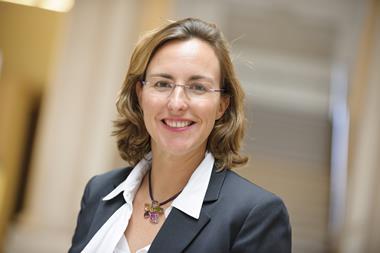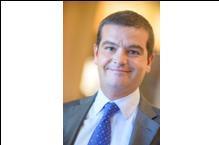From its early days with six national affiliates, no office and a hard-to-pronounce acronym, FERMA has blossomed into a formidable, well-respected force across Europe. This is the story so far

When FERMA was created 40 years ago, the insurance market was unrecognisable compared to what it is today. The sector was small and fragmented in the Europe of the 1970s, with many companies operating on a domestic scale, mainly because laws were so prohibitive. In a paper on insurance regulation at the time, the head of the European Commission’s financial integration and capital movements division Sotirios Kollias described this market as “overprotected”, with “excessively restrictive regulatory systems”.
During this time, the Commission attempted to open the market to competition through the freedom of establishment, a rule that allowed insurance companies in one member state to open a branch, subsidiary or agency in another.
Two directives – the First Non-Life Insurance Directive (73/239/EEC) and the First Life Directive (79/267/EEC) – laid down the basic rules for setting up offices.
The prospect of a freer market prompted much debate among insurers and brokers and it gradually became apparent that a European association was needed to represent the views and interests of commercial insurance buyers.
“The director of finance and insurance, Gérard Imbert, was not happy seeing a community of insurers [wanting to get involved] at regulation level and occupying the ground alone,” recalls François Settembrino, a founding member of the Association Européenne des Assurés de l’Industrie (AEAI) – FERMA’s progenitor before its 1995 renaming.

Francois Settembrino
“The employers’ unions were influenced by insurers, but had no idea what insurance and risk management were. The EU was still in its infancy and getting involved then was essential.”
Imbert decided to form a greater allegiance with insurance associations across Europe, bringing them under one umbrella association. However, only three insurance societies – based in the UK, France and Italy – agreed to join.
These three acknowledged the benefits of a unified European voice and publicly supported efforts to bring this to fruition.
John Parkinson, chairman of the UK risk management association Airmic between 1974 and 1975, summed up the importance of such a group in the book Aimic to Airmic: The First 35 Years.
“For some time, Aimic (as it was known before it was renamed Airmic in 1974) had been active in watching over the interests of insurance buyers in the European Economic Community (EEC) and had created an EEC working party under the chairmanship of Peter Lerwill, then with British Aircraft Corporation,” he wrote.
“We had made suggestions to others that advantage would be derived by European insurance buyers speaking with a single voice…”
Imbert felt that three associations were not sufficient and further support was required to launch a successful European federation – so, prior to AEAI’s inception in 1974, Settembrino rounded up some more. “After huge efforts, three other countries joined the movement,” he says. “They were the Netherlands, Germany and Belgium” – and on 28 June 1974, AEAI came to life with six member associations.
Early days
During its early years, the association’s public profile was modest and activities were limited to a few meetings. “Frankly, it didn’t do much in the beginning,” recalls Pierre Sonigo, FERMA’s general secretary, and a risk manager who became involved with the federation in the early 1980s. “There was no office and no money. It was more a get-together two or three times a year to discuss insurance matters.”
Many of these initial meetings were with BUSINESSEUROPE (formerly the Union of Industrial and Employers’ Confederations of Europe), a Brussels-based association representing enterprises of all sizes. The association also worked with the France-based International Chamber of Commerce and maintained contact with the Commission.
“[These meetings] gave the presidents opportunities to promote risk management and represent the interests of their member associations at several levels,” says Settembrino.
In its first seven years, AEAI’s public profile increased significantly. This was largely as a result of its conferences, the first of which was held in October 1981. The risk management forum came about after AEAI’s larger US counterpart, RIMS, encouraged AEAI to organise regular conferences. RIMS provided technical and financial assistance and until 1999, the two associations organised the risk management forum every other year in Monte Carlo.
“The first forum was a great success,” Settembrino recalls. “Communication and networking became a huge benefit of attending AEAI-RIMS conferences.”
However, before the forum became a permanent fixture of the association, the biannual format gained little support from AEAI’s board members. Many of them wanted the forum to take place every three years and it was up to Settembrino, who became president in 1984 (a position he would hold for 10 years before stepping down) to convince them otherwise. “I was the only one who wanted the forum to take place biannually,” he explains.
“My main argument against a three-year format was that the elapsed time would be far too long. Hosting the conference every year would run the risk of topics being repeated year after year.”
The two-year format was finally agreed on and FERMA continues to host its forums biannually.
Profits from the AEAI-RIMS conferences enabled the association to start the seminar – an event for risk managers only, held in alternate years, which FERMA continues to stage today. Although it helped raise AEAI’s profile, RIMS’ support was in some ways a hindrance.
Throughout the mid-1980s and 1990s, RIMS’ profile tended to overshadow that of AEAI, with the latter increasingly referred to as ‘the European arm of RIMS’. Moreover, many on AEAI’s board felt Monte Carlo did not give the forum the “right image”.
“The general consensus was that the conference in Monte Carlo was inward-looking,” says Ina Tomkinson (née Barker) who became chair of the association’s technical committee. “It was difficult for risk managers to make the case to their chief risk officer to attend the conference in Monte Carlo. I was a risk manager and I was one of those people who would never ask my board of directors if I could go.”
New identity
Everything changed, however, when Hugh Loader, who was president from 1994-99, recruited Tomkinson onto the technical committee. During this period, AEAI had changed its name to FERMA (the Federation of European Risk Management Associations) because it was important to add ‘risk management’ to its title (and because AEAI was a mouthful to pronounce. New board members were also appointed – members who “tended to be more forward-looking in the sense of wanting change”, recalls Tomkinson. As for the technical committee, the changes it eventually enforced marked a significant turning point. The committee – which included two former presidents, Maurizio Castelli and Thierry van Santen – wanted to break away from RIMS and hold its own biannual conference. It wanted to do away with the ‘European RIMS’ image and become known as FERMA.
 1997 - Establishment of ‘New FERMA’, a working group of board members whose aim is to enhance FERMA’s presence and improve risk management
1997 - Establishment of ‘New FERMA’, a working group of board members whose aim is to enhance FERMA’s presence and improve risk management

“The board really felt the importance of this and was at the forefront of pushing for change,” says Tomkinson. “We had regular meetings and two important decisions were made – that we would no longer team up with RIMS and that we would change the venue of the biannual forum, hosting it in a different European city every two years because this would show that we were European-wide.”
The board eventually decided on Berlin for its 1999 forum. It was a symbolic choice. The Berlin Wall that once divided the city, built by the communist regime of East Germany to stop its citizens escaping to the West, had been torn down in 1989, dramatically marking the end of the Cold War.
German reunification had taken place in 1990. “Choosing Berlin for our first conference sent a message, that we were European and unified,” Tomkinson says. “It was a superb location. I remember looking out the window from my hotel room and being taken aback by the skyline. It was covered in cranes – the city was building itself up after the wall had been knocked down, much like FERMA was building itself up. The success of the Berlin forum proved to be a big step forward in FERMA’s new direction.”
Huge success
According to Castelli, who was president in 1999 and was integral to transforming FERMA’s image, the forum in Berlin was “a huge achievement”. Although it attracted fewer delegates than the Monte Carlo conferences, there was a bigger turnout of risk managers, which helped to strengthen FERMA’s image as a European risk management association.
He says: “We felt a lot of pressure to get our first independent forum right. Before our Berlin event, the FERMA-RIMS conferences in Monte Carlo was mentioned extensively in the press, and articles said that it wasn’t European; it wasn’t a conference for risk managers; and it was heading in the wrong direction.
“In my opening speech, I cited an article that made those remarks and I countered those comments. I told delegates that this forum in Berlin is European and is for the risk management community. I remember the positive energy in the room – people were excited, energetic, and I heard a ripple of ‘wow’ noises throughout the conference room. At this point, I thought to myself ‘we made it’”.

On its own
Indeed, 1999 marked the moment when FERMA was ready to stand on its own feet, independent of RIMS. Since then, the biannual forum has been held across the continent in business districts of Barcelona, Rome, Lisbon, Geneva, Prague, Stockholm and Maastricht.
Other developments that year raised FERMA’s profile further. The association had found permanent premises in Brussels and hired its first full-time member of staff in Florence Bindelle, executive manager. “At this point, we really felt that FERMA was growing and that it had its own identity” says Castelli. “In establishing a permanent basis with a fulltime employee, we had a point of contact for all inquiries. FERMA was on the up.”
Castelli’s successor, Thierry van Santen, went on to strengthen relationships with the European Commission. As a result, FERMA began to lobby the Commission proactively on legislation such as the Reinsurance Directive and the Environmental Liability Directive.
During this period, FERMA took on an advisory role. Through a programme organised by the Commission’s Technical Assistance Exchange Instrument (TAILEX – DG Enlargement), it provided guidance on best practice in insurance and risk management.
At the same time, it began publishing position papers more frequently, on subjects such as e-commerce and insurance and risk management and internal controls.
To this day, FERMA maintains close contact with the Commission and, in recent years, particularly under the leadership of Marie- Gemma Dequae (2005-09) and Peter den Dekker (2009-11), FERMA has increased its activities at the Commission.
Since then, the federation has grown from strength to strength, building on the foundations it set during these formative years.
What began with six member associations holding a few meetings with BUSINESSEUROPE has grown into a 22-member association body, from 20 European countries, together representing 4,300 individual risk and insurance managers. It has expanded its reach from Western Europe in 1974 to Central and Eastern, and South-East Europe, representing risk and insurers buyers in the Czech Republic, Finland, Poland, Russia, Slovenia and Turkey.

As a result of this growth, in 2008, FERMA reformed its governance structure and streamlined its board. No longer do candidates from all national associations sit on the board; now 12 are elected independently from their national representation, helping to improve decision-making and efficiency.
Pioneering research
Through the years, FERMA has influencedimportant decisions on risk management training and education in addition to insurance laws. It has pioneered research detailing thetrends and changes in risk management with its benchmarking survey launched in 2002 and papers on major business risks such as cyber.Its forum has grown in scale and popularity since its was created in 1981 and is now an important date in the diary for leading risk managers, insurers and brokers.
As it enters its 41st year, FERMA is taking on the challenge of creating a European certificate that it hopes will transform risk management from a trade or discipline into an internationally recognised profession. A huge task, but if the past four decades are anything to go by, the future is bright for the association and risk management. Kin Ly




















No comments yet